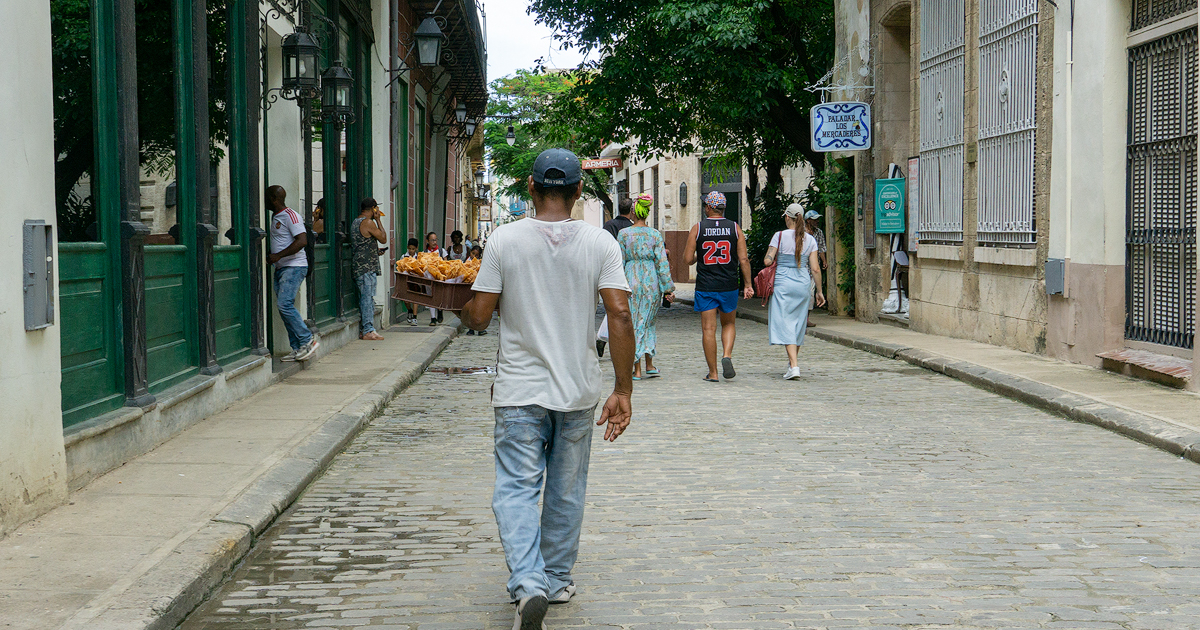
Just by looking at a restaurant menu in Cuba, one can see the devaluation of the peso. Let's take a random look at La Rosa Negra in Havana: chicken soup for 600 pesos; moro rice for 200, ropa vieja for 1,915 pesos, an espresso for 150 pesos, a domestic beer for 340 pesos; fried pork masses for 2,145 pesos... The prices are unaffordable, they consume the Cuban salary and remain sky-high.
In fact, Cuba closed the month of May with a year-on-year inflation increase of 31% compared to the same month last year, according to the data shared recently by the Minister of Finance, Lourdes Rodríguez, with a group of representatives of small and medium-sized enterprises, in a positive tone, of course, clarifying that the trend is not higher than last year. Basically, she sees prices as stable within the seriousness, considering that the accumulated rate from January to May is 15%. "We are trending at a pace that is not higher than in 2023, but it also does not stop its growth," she warned.
What the minister did not say, in order not to worsen the diagnosis, is that hyperinflation multiplies the data in the United States by 10 (3.3% in May and an accumulated 2.4% in 2024) and even though it seems like little, compared to what is being experienced under the management of Díaz-Canel, it is very noticeable. For example, olive oil in Spain, one of the major European producers, has gone from costing just over 3 euros to 8-9 euros per liter in just one year. And inflation is under control in Spain, hovering around 3.6% in May (year-on-year).
Those olive oil prices in Spain are nothing compared to an island trapped in a spiral of increases that, according to economist Alejandro Hayes, depends largely on the exchange rate, which long ago escaped the control of the regime. So much so that the Bank of Cuba has gone so far as to blame El Toque for inflation in Cuba. The enemy is always external.
The entire pricing mechanism of the private sector is influenced by the exchange rate. Thus, given the weight of the private sector in the supply of goods and services, it can be stated that without reducing the exchange rate, inflation cannot be eliminated. To this idea is added the recent dollarization of part of the fuel supply, a key link in price formation. Conclusion: with essential goods and services supply, such as food and fuel, depending on the dollar, without reversing the exchange rate, inflation cannot be reversed," Hayes stated in response to questions from CiberCuba.
According to the Cuban economist Emilio Emilio Morales, in the last six years inflation has soared in Cuba by 1,500%, and in his opinion, the only thing that could stabilize the Cuban peso is if the Government falls.
Amidst this panorama, the Cuban regime plans to impose a price cap on the six most consumed products on the island, according to a survey they claim to have conducted. In this way, they would set a cap on chicken (680 pesos), detergent (630), powdered milk (1,675), spaghetti (835), sausages (1,045), and oil (990 pesos). The issue, as admitted by the Finance Minister herself, is that products such as chicken or powdered milk are missing.
As of today, in Havana, oil is being sold for between 1,100 and 1,200 pesos; detergent is at 450 (below the price they want to cap). The same goes for chicken, which is sold at 450 per package when available. Powdered milk is sold for 2,500 and spaghetti for 350. This difference in prices indicates that the Government itself anticipates that prices will continue to rise for some of these basic products.
What do you think?
COMMENTFiled under: